How To Bet on Horses – UK Betting Guide For Beginners
Horse racing has long been a popular part of British sporting culture, drawing crowds to racecourses and betting shops alike. If you’re new to betting, it may feel a little overwhelming at first—but getting started doesn’t have to be complicated.
This beginner-friendly guide breaks down the basics of horse betting in clear, straightforward terms. From understanding the different types of bets to how odds work, it covers what to expect when placing a bet and what to keep in mind when choosing a bookmaker.
Whether you’re thinking about placing your first bet or simply want to understand the process better, read on to learn more.
Getting Started With Horse Betting
If you’re interested in getting started with horse betting, the first step is to choose a bookmaker that is licensed and trusted in the UK. When signing up with an online bookmaker, you’ll usually need to provide some identification to ensure fair play and confirm that participants are aged 18 or over.
It’s a good idea to set a budget before placing any bets. Deciding on a spending limit in advance can help you manage your betting and enjoy the experience responsibly.
Terms like “win” or “each-way” might seem confusing at first, but there’s no need to worry—these basics become clearer with a little time and practice. Many online bookmakers offer helpful information about races, horses, trainers, and jockeys to support newcomers.
Taking some time to watch races or review results can also build understanding and familiarity. Additionally, UK bookmakers provide tools to help manage spending, making it easier to keep betting enjoyable and within your limits.
How To Choose Your Horse For Betting
If you’re trying to decide which horse to bet on, there are a few straightforward steps that may help guide your choice.
You might want to start by checking the form guide, which shows how each horse has performed recently. This information can provide valuable insight when narrowing down your options.
Consider the details of the race itself, such as the distance, type of track, and ground conditions—often referred to as the “going.” These factors can influence how well a horse might perform, as some horses prefer certain types of ground over others.
It’s also useful to look at the records of the jockey and trainer, especially if they have a strong track record together. Pay attention to any changes, like a different weight the horse has to carry or if it’s competing at a higher class, as these can affect the horse’s chances.
Above all, stick to the budget you set earlier. Remember, betting on horses is never guaranteed, so keeping within your limits is always the safest approach.

Popular Types of Horse Racing Bets Explained
There’s more than one way to bet on a race. The most familiar is choosing a horse to win. An each-way bet, covered shortly, can make betting a bit more flexible as it pays out for finishing in certain top spots as well as winning.
Other options include picking several horses to finish in the first places (like forecasts and tricasts) or grouping together bets across more than one race (accumulators).
Knowing which type you want to try might make your experience smoother; look out for more detail on singles, multiples, and each-way bets in the following sections.
Singles and Multiples Made Simple
For bettors just starting out, a single bet is typically the simplest option—it involves backing one horse in one race, either to win or sometimes to place.
For those interested in combining bets, an accumulator, often called an “acca,” allows bettors to link several selections together. In this case, every horse in the accumulator must achieve the predicted result (such as winning their races) for the bet to be successful. The winnings from each individual selection roll over to the next, potentially leading to a larger overall return if all selections perform well.
Multiples can take the form of doubles, trebles, or even more, depending on how many races are included. These types of bets are popular with bettors who enjoy the challenge of linking multiple picks together.
What Is Each-Way Betting?
Each-way betting essentially involves placing two bets in one. Bettors split their stake, with half placed on the horse to win the race and the other half on the horse to finish within the places set by the bookmaker—often second, third, or sometimes fourth.
The number of places that count can vary depending on how many horses are running in the race. The payout for a placed finish is usually a fraction of the winning odds, and these terms can change from race to race.
If the horse doesn’t finish first but places within the designated positions, bettors can still receive a return. It’s important to check the bookmaker’s place terms in advance to understand the potential payout.
This type of bet is a popular, straightforward option, especially in races with a larger field of runners.
Understanding Horse Racing Odds
Odds represent the potential return a bettor could receive if their horse wins or finishes in the required position. In the UK, odds are most commonly shown as fractions, such as 5/1. Here, the first number indicates the profit for every pound staked, while the second number is the amount staked. For example, a £1 bet at 5/1 would return £5 in profit, plus the original £1 stake if the bet is successful.
Decimal odds may also be used, often seen as a number like 6.0. This figure includes both the stake and the profit, meaning a £1 bet at 6.0 would return £6 in total if the bet is successful.
Understanding how to read these odds allows you to better grasp the potential returns on your wagers and make more informed decisions if you choose to place a bet.
Decoding Place Payments in Horse Racing
When a horse doesn’t win but finishes within the designated places, the place portion of certain bets can still result in a payout. The number of places paid and the fraction of the odds used for these payouts can vary depending on the race and the bookmaker.
Typically, bookmakers specify both the number of places they pay out on and the portion of the odds applied to the place return. It’s important for bettors to check these details beforehand, as licensed bookmakers provide this information clearly.
If you’re wondering how many places are usually paid in a race, that is what we’ll explore next.
How Many Places Are Usually Paid?
The number of places paid in a race generally depends on the size of the field. In smaller races, bookmakers often pay out on just the winner and second place. For larger fields, particularly in handicap races, payouts may extend to the top three or four finishers—and occasionally even the top five when there are many runners.
Bookmakers make this information readily available, so if you plan on placing a bet, you can easily check what to expect beforehand.
Common Horse Racing Betting Terms You Should Know
Here are some common horse racing betting terms that bettors will often come across. Understanding these basics can make following races and placing bets much clearer:
- Win: A bet placed on a horse to finish first.
- Each-Way: A bet split between a win and a place payout if the horse finishes in one of the top positions.
- Place: A bet on a horse to finish within a set number of top spots, such as first or second.
- Starting Price (SP): The odds a horse has at the start of the race.
- Fixed Odds: Odds agreed upon at the time the bet is placed, which won’t change afterwards.
- Accumulator (Acca): A multiple bet covering two or more selections; all must win for the bet to pay out in full.
- Forecast: Selecting which horses will finish first and second in the correct order.
- Tricast: Selecting which horses will finish first, second, and third in the correct order.
- Non-Runner: A horse withdrawn from the race.
- Dead Heat: When two or more horses finish exactly simultaneously, resulting in a shared outcome.
Exploring Advanced Bet Types
Once you feel comfortable with the basics, you may be interested in exploring some of the more advanced bet types available.
These can include selecting horses to finish in an exact order, such as with a tricast, or placing bets that cover multiple combinations across different races. While forecasts and accumulators have been mentioned already, there are also bets that blend elements of both, which may offer added interest but often involve more detailed rules.
If you’re interested in placing these more complex bets, you may want to carefully review bet slips and understand how the bet functions. Next, let’s take a closer look at accumulators and their variations.
What Are Accumulators and Their Variations?
Accumulators, often called ‘accas’, allow bettors to combine several selections into a single bet. For the full payout, all chosen selections must win or achieve the required result. A double involves two selections, a treble three, and larger accumulators can include four or more.
There are also popular variations like Trixies, Yankees, and Canadians, which group multiple smaller bets together—giving bettors the chance to receive a return even if not every selection wins.
Because accumulators cover more selections, both stakes and potential returns tend to be higher, so it’s important for bettors to set their limits before placing these bets.
Forecasts and Quinella Explained
Forecasts and Quinellas offer bettors a chance to predict the top two finishers in a race. A straight forecast requires selecting the horses to finish first and second in the exact order.
In contrast, a reverse forecast covers both possible orders, providing greater flexibility. Similarly, a quinella pays out as long as the two chosen horses finish first and second in any order.
Bet On Horse Racing Online at Mr Luck
If you’re looking for a secure place to bet, Mr Luck is a reliable option. We are fully licensed under UKGC regulations, ensuring that player protection is always our top priority.
You’ll find simple registration, tools to help manage your activity, and a range of race markets from home and abroad. Information is shown clearly at every step, so you know what you’re betting on and what the terms are.
Account management tools are ready for you to use, so keeping to your limits is straightforward. Horse racing betting at Mr Luck comes with all necessary safety features, ensuring a fair, enjoyable experience every time.
Visit Mr Luck to explore the range of betting options we have available.
**The information provided in this blog is intended for educational purposes and should not be construed as betting advice or a guarantee of success. Always gamble responsibly.

